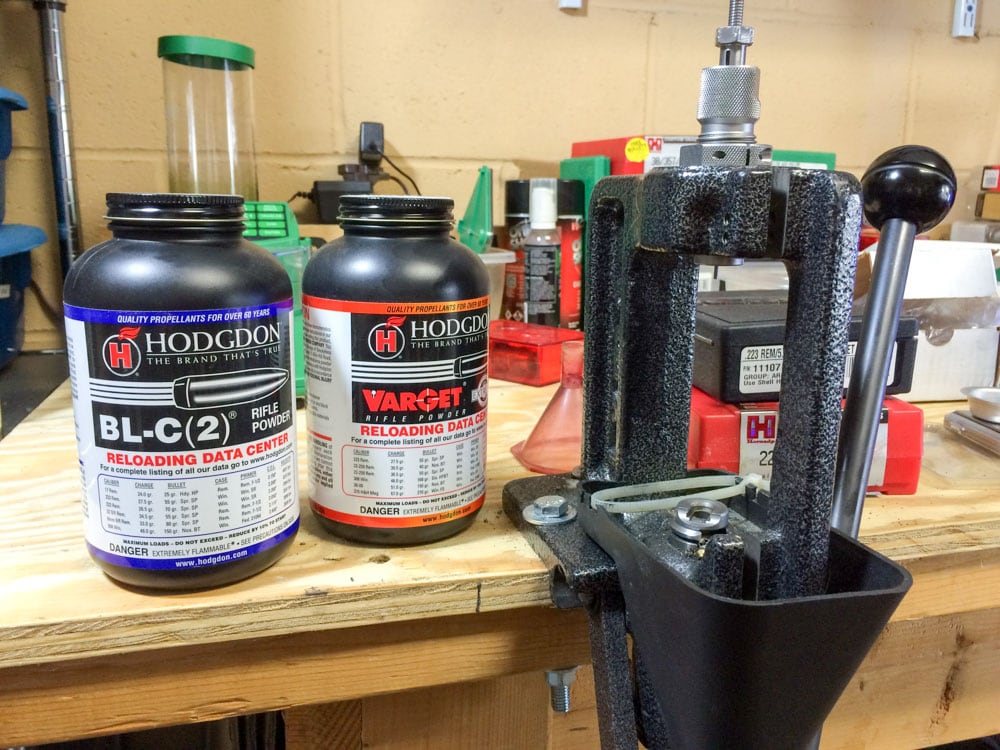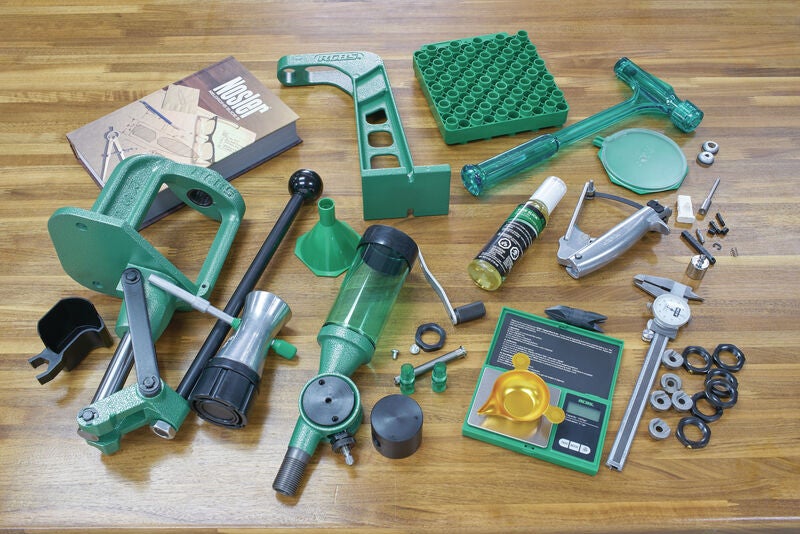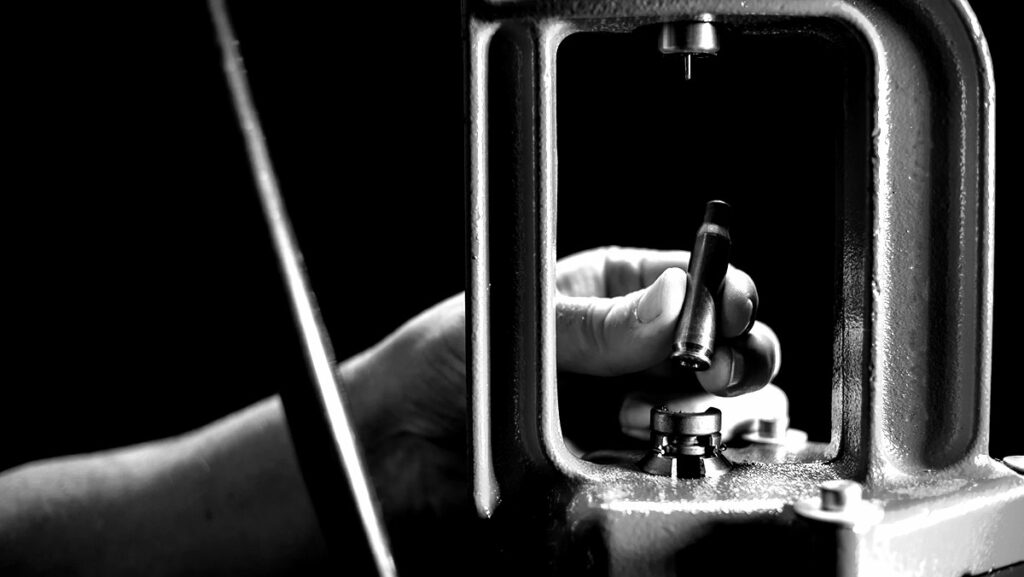Sooo, you’ve shown interest in learning the skill of reloading your own ammo. Great, isn’t it? But does reloading only have benefits and no drawbacks?

The skill behind reloading is not as naive and simple as it seems. If you take a close look, reloading ammo is an extremely meticulous art that requires skill and knowledge.
And I’ll give you a glimpse of that here. So keep reading.
Reloading 101
Reloading or some may otherwise call it handloading. Refers to the process of creating ammo cartridges on your own. It’s like buying a pizza from a restaurant. You can either go out and buy one. Or simply DIY for personalization or your passion.
The term handloading refers to creating your own ammo from scratch. Whereas reloading refers to creating ammo from previously fired cartridge cases. So we’ll use the term reloading here.
Back in the day, handloading was a very common practice. People used to cast lead balls from molten metal to craft ammo. In fact, that’s where the term ‘gauge’ for shotguns came from. But after the invention of modern metallic cartridges in 1846. Things started to change a bit due to mass production and the easy availability of ammo in the markets.
Reloading your ammo requires you to have a reloading setup. This includes a tumbler, priming press, trimming/resizing tool, caliber specific dies, powder measure, and reloading press. You’ll also need bullets, brass/steel casings, gunpowder, and primers. Since those are the four things that make a cartridge.
The process starts with cleaning the brass cases by putting them in a tumbler with cleaning media and polish. That’s when you’re using already fired cases. To clean the grime and powder residue from them. Make sure to wear a mask during this step. Plus, tumblers are also noisy.
The next step is to prep the case. Start by depriming the case (removing the primer) and putting it inside a resizing die. The case expands upon firing so it has to be resized to the normal diameter. Resizing sometimes causes the case to lengthen, so it has to be cut short. It has to be cut, debur, and chamfer the edges using a tool.
After this, add the primer to the case, add the required amount of gunpowder, seat the bullet and seal it using the press. That’s all.
You can either buy each of these reloading tools individually. Or you may go for a full reloading kit that gonna cost you anywhere between $150 to $400.
The Benefits of Reloading
Reloading has a wide range of advantages. From economical to technical, there’s a lot one can achieve by reloading his/her own ammunition. The first of these is savings.
A major chunk of the cost price of a cartridge is the brass casing and gunpowder. When you go to the range and shoot hundreds of bullets out of your weapon. The spent cases just wait lying there to be picked up and sold to reloaders or companies. You should pick ‘em up and start becoming a DIY’er.
Reloading can save you anywhere from 10% to 50% of your money compared to buying new ammo. Especially with match grade rounds. Additionally, rifle brass can be reloaded 5-6 times and pistol brass even more. You just have to inspect the cases for any cracks or significant damages before reloading.

Many pro-level shooters prefer to handload or reload their own ammunition rather than buying. Since they get to have more control over the type and amount of gunpowder, the dimensions of the case, the weight of the bullet, and other parameters. Which largely affects accuracy. This may seem miniscule to normal shooters, but for a pro-competitive or long range shooter, every centimeter counts.
Another very unique benefit of reloading is that you can make obsolete or hard-to-get cartridges. Some old calibers that have gone out of the market or are rarely available on shelves can be hand loaded. This solves the demand-supply problem, as well as lessens the overall cost.
Reloading your own ammo is also a great way to avoid market shortages. Such as we saw during the coronavirus outbreak. When the market shelves both online and offline were swept clean of ammo. Causing the prices to rise.
Where Reloading Falls Short
Like every coin has two sides, reloading also has a few drawbacks. It is important to focus upon these limitations to understand whether reloading is for you or not.
Before you start with reloading, remember that only centerfire cartridges can be reloaded. Rimfire cartridges like the .22lr are not reloadable due to their design limitations.
First of all, creating a reloading setup requires an upfront investment. This can range from anywhere between $700 to $2000. The more advanced and semi-automated machines you get, the more they will cost.

Now once you decide to invest in this setup, you must also find a dedicated reloading space in your house. It can be a corner in your garage or a separate room. But make sure you have a safe storage space (preferably fireproof) where you can store the reloading supplies.
The next thing to look out for is proper knowledge. If you are new to reloading, start small and try to learn as much as possible. Improper reloading is extremely hazardous. If you reload the wrong amount of powder in a week or overly strong casing. It can cause an explosion in the rifle. Hitting you or any bystanders. Further resulting in fatal injuries.
Reloading ammunition is not a jolly craft skill. It’s serious business. Start slow and learn. Additionally, due to this risky possibility of failures, many indoor shooting ranges don’t allow reloaded ammo.
On a side note, I’d recommend using reloaded ammunition for anything except self-defense. Since the legal ramifications, one has to face after such incidents are tedious and reloaded ammo can be a problematic factor there.
How to Take Advantage of Reloading
So before you start reloading your own ammo. You’ll have to invest in a reloading kit. As I mentioned earlier, you can either buy individual tools or a reloading kit and presses. Take a look at how you should proceed.

The first thing to look out for is a good reloading bench. These benches are a tad different from your normal MDF or plyboard tables. These benches are designed with compartments, drawers, and a strategically designed layout to ease the reloading process.
After you choose a bench, the next step is to choose a press. There are three types of reloading presses available today. Single stage press, turret press, and progressive press. A single stage reloading press is the cheapest and simplest. But requires you to switch dies manually. So you can only go through one step at a time.
A turret press has multiple rotating die sockets so you can accelerate the reloading process. The most advanced of these three is the progressive reloading press. This press has multiple stations so you can churn out finished cartridges one after the another.
Make sure you buy the right reloading dies and accurate reloading scales to ensure effective results.
If you are a complete beginner make sure you choose from the best reloading kits for beginners. Additionally, one must always keep a good reloading manual with them while reloading. In order to ensure that they choose the right amount of powder loads and follow the other specifications for reloading a specific kind of ammo. Beginner or not, there are always chances of messing up. So better follow a manual.
Conclusion
Reloading your own ammunition gives you a better option of saving some extra money. While also being in control of your ammo and how it performs.

Reloading is a skillful and risky craft that has to be mastered with time and patience. Starting out will require some investment and the dedication to learn this trade.


